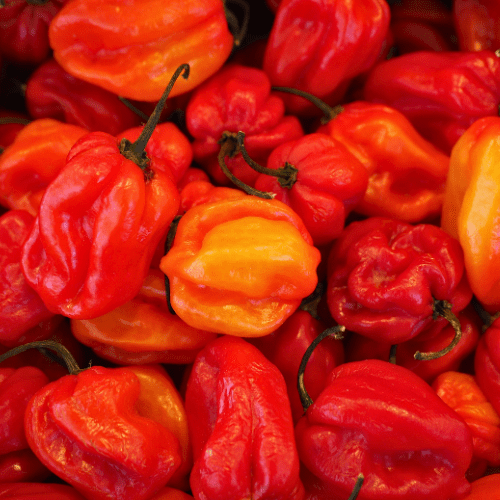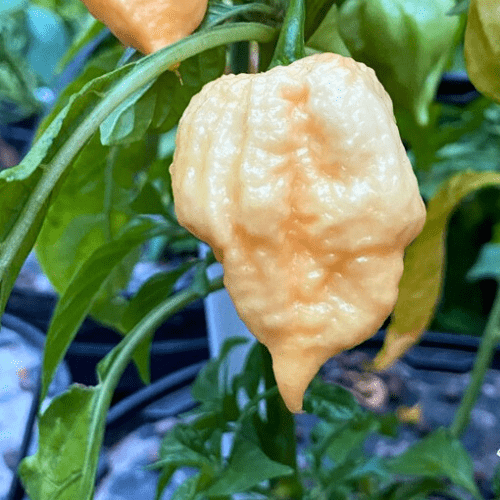Position
Like many hot peppers, the 7 Pot Primo Red thrives in warm climates. It requires well-drained soil and plenty of sunlight to produce the best fruit.
Soil
The plant prefers loamy, well-drained soil with a pH level between 6.0 and 6.8. Good drainage is essential to prevent waterlogged roots.
It benefits from nutrient-rich soil; adding half a bag of our Volcanic Rock Dust (R25 per bag) and a bag of Superfrass (R25 per bag) will assist in rapid growth
Fertilising
Chilli plants are heavy feeders, especially when they start producing fruits. They require nutrient-rich soil to support vigorous growth and fruit development.
Thereafter, Apply one teaspoon every 4-5 months of our berry and fruit slow release fertiliser. Press the fertiliser balls gently under the soil and add a loayer of mulch, moving the mulch away from the plant stem.
Mulch:
Apply 2 to 5 centimetres of pine bark mulch to protect the roots from UV damage and drying out. It retains moisture, and maintains an optimal pH. Do not let the mulch touch the plant stem, as it may cause infection or rot.
Water:
Water young chili plants every 2-3 days. Once established, allow the top inch or two of soil to dry out between waterings.
Chili plants do not tolerate waterlogged conditions. Therefore, the soil should be well-drained to prevent root rot and other moisture-related issues.
Wilting during the hottest part of the day can be expected, but if plants are consistently wilting in the morning or evening, they likely need more water.
Containers dry out faster than garden soil, in summer water plants in the Root stimulating pots daily if no rain.
Caution: This pepper requires caution when handling it, especially when preparing it. Direct contact with the skin or eyes can cause irritation or burning sensations.






